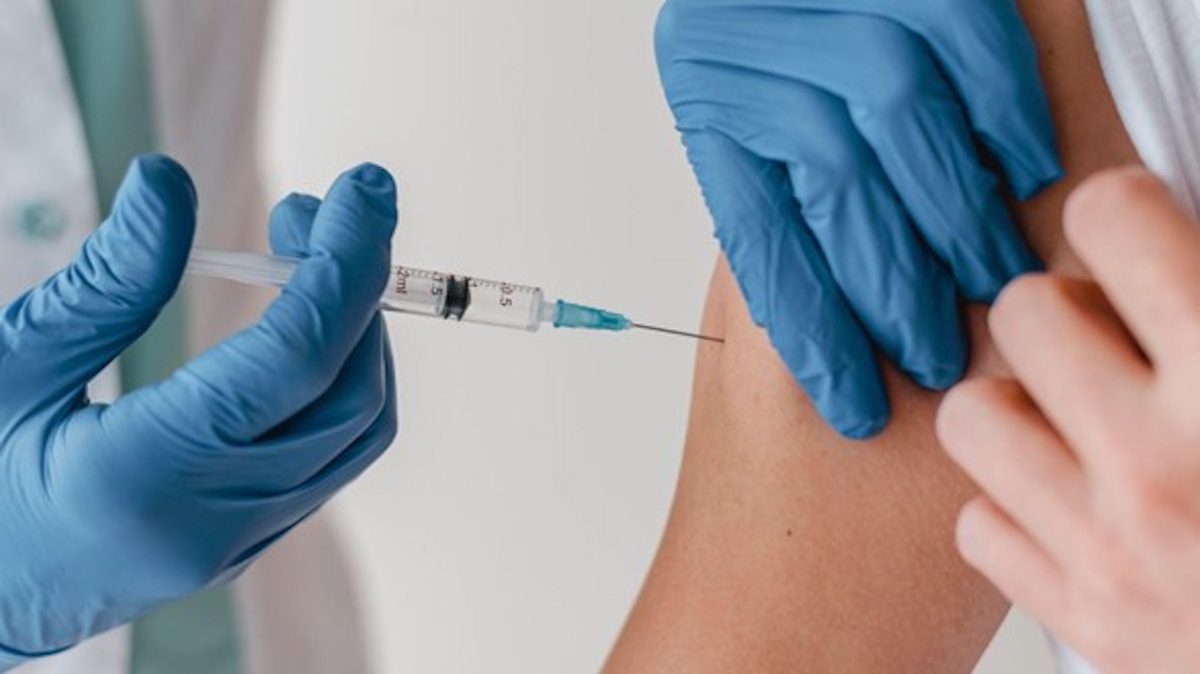Medical injections are foundational tools in healthcare, serving as essential methods for delivering medications, vaccines, and therapeutic substances directly into the body. They enable fast, targeted, and sometimes life-saving effects that oral medications or other routes may not offer. For healthcare providers and patients alike, understanding the different types of injections is critical, as each has its own purpose, technique, and benefits.
In this comprehensive guide, we’ll explore nine primary types of medical injections, detailing their applications, techniques, and advantages in various medical scenarios.
Table of Contents
1. Intramuscular (IM) Injections
Definition and Uses:
Intramuscular injections are used to administer medication directly into muscle tissue, allowing for relatively fast absorption and sustained drug release. Muscles have a rich blood supply, making this method ideal for medications that need quick and effective dispersal throughout the body. Common injection sites include the deltoid (shoulder), vastus lateralis (thigh), and gluteal (buttocks) muscles.
Primary Applications:
- Vaccinations
- Antibiotics
- Hormone therapies (such as testosterone or estrogen)
- Vitamin B12 injections
- Pain relief medications
Technique:
- Uses longer needles, typically between 1 and 1.5 inches.
- Injected at a 90-degree angle to ensure the medication reaches the muscle layer.
- Site rotation is recommended to avoid irritation or muscle damage.
- In certain cases, the Z-track method is employed, which involves pulling the skin slightly before injecting to lock in the medication and prevent leakage.
Benefits:
- Provides a reliable absorption rate.
- Suitable for larger medication volumes than some other types of injections.
- Reduces gastrointestinal side effects by bypassing the digestive system.
2. Subcutaneous (SC) Injections
Definition and Uses:
Subcutaneous injections deliver medication into the fatty tissue layer just beneath the skin and above the muscle. This method is slower in absorption compared to intramuscular injections, making it ideal for drugs that require gradual release.
Primary Applications:
- Insulin (for diabetes management)
- Heparin (blood thinner)
- Growth hormones
- Allergy medications
- Certain vaccines
Technique:
- Uses shorter needles, generally between 3/8 and 5/8 inches.
- Administered at a 45-degree angle.
- The “pinch-and-lift” method helps ensure the injection reaches the fatty layer rather than the muscle.
- Rotating injection sites is necessary to prevent tissue damage.
Benefits:
- Slower absorption rate, allowing for a prolonged effect.
- Suitable for self-administration, especially for long-term treatments like insulin.
- Generally less painful than intramuscular injections.
3. Intravenous (IV) Injections
Definition and Uses:
Intravenous injections deliver medications directly into the bloodstream through a vein. This method allows for immediate effects, making it crucial for emergency and critical care situations.
Primary Applications:
- Emergency medications (e.g., during cardiac events)
- Chemotherapy for cancer treatment
- Antibiotics for severe infections
- Fluid replacement for dehydration
- Blood products (e.g., during transfusions)
Technique:
- Requires skill in venipuncture, as the medication goes directly into a vein.
- Aseptic technique is critical to avoid infections.
- Can be administered through peripheral lines or central lines (for prolonged treatment).
- Requires careful monitoring to prevent adverse reactions.
Benefits:
- Provides immediate drug action, crucial for emergencies.
- Allows precise control over dosing.
- Suitable for continuous administration of fluids or medications over extended periods.
4. Intraosseous (IO) Injections
Definition and Uses:
Intraosseous injections involve administering medication directly into the bone marrow. This technique is used when access to a vein is difficult or impossible, typically in emergency situations.
Primary Applications:
- Emergency scenarios when IV access is not possible.
- Cardiac arrest cases.
- Severe trauma where time is critical.
- Pediatric emergencies, where veins may be harder to locate.
Technique:
- Requires specialized intraosseous (IO) devices designed for bone penetration.
- Common sites include the proximal tibia (near the knee).
- Proper positioning and alignment are essential for successful insertion.
- A sterile technique is crucial to prevent infection in the bone.
Benefits:
- Offers rapid vascular access in emergencies.
- High success rate, especially in critical cases.
- Serves as an alternative when IV access fails or is not feasible.
5. Intradermal (ID) Injections
Definition and Uses:
Intradermal injections are used to deliver substances into the dermis, the layer of skin just beneath the surface. This method is mainly used for diagnostic purposes or when very small amounts of medication are needed.
Primary Applications:
- Tuberculosis (TB) tests
- Allergy testing
- Some vaccines
- Local anesthesia for minor procedures
Technique:
- Very short needles are used to inject a small amount of medication just under the skin.
- Administered at a shallow angle, typically between 10-15 degrees.
- Small volumes (0.1 mL is typical) are used to create a characteristic “wheal” or raised bump.
Benefits:
- Useful for diagnostic testing, allowing healthcare providers to observe reactions.
- Minimal discomfort for the patient.
- Precise local delivery of substances, ideal for specific tests.
6. Epidural Injections
Definition and Uses:
Epidural injections deliver medication into the epidural space around the spinal cord. This method is often associated with pain relief, especially during labor or for chronic back pain management.
Primary Applications:
- Pain management, particularly for severe or chronic pain
- Labor analgesia for women in childbirth
- Chronic back pain relief
- Nerve root inflammation treatments
Technique:
- Requires specialized training due to the proximity to the spinal cord.
- Image guidance, such as ultrasound, is often used to ensure accuracy.
- A sterile environment and technique are essential to prevent infection.
- Proper patient positioning is critical for successful administration.
Benefits:
- Provides targeted pain relief directly at the source of pain.
- Reduces the need for oral pain medications, which may have side effects.
- Long-lasting effects make it suitable for ongoing pain management.
7. Intra-articular Injections
Definition and Uses:
Intra-articular injections deliver medication directly into the joint space. They are commonly used for treating joint inflammation and pain associated with conditions like arthritis.
Primary Applications:
- Corticosteroids for inflammation reduction
- Viscosupplementation for joint lubrication
- Local anesthetics for pain relief
- Joint aspiration procedures to drain excess fluid
Technique:
- Requires precise anatomical knowledge of the joint structure.
- Often guided by ultrasound for accuracy.
- Sterile technique is essential to avoid infection within the joint.
- Specific approach varies based on the joint being treated (e.g., knee, shoulder).
Benefits:
- Directly addresses joint conditions, providing relief at the source.
- Minimizes systemic effects, as the medication is localized.
- Often offers immediate relief from pain and inflammation.
8. Intrathecal Injections
Definition and Uses:
Intrathecal injections involve delivering medication directly into the cerebrospinal fluid (CSF) around the spinal cord. This highly specialized injection route is used for conditions affecting the central nervous system (CNS).
Primary Applications:
- Spinal anesthesia for surgeries
- Chemotherapy for cancers involving the CNS
- Pain management for severe, persistent pain
- Diagnostic procedures involving CSF sampling
Technique:
- Performed with precision, as improper placement can have serious consequences.
- Requires strict sterile technique to avoid infection in the spinal area.
- Careful patient monitoring is necessary during and after the procedure.
Benefits:
- Delivers medication directly to the CNS, providing rapid effects.
- Requires lower doses compared to other routes, reducing side effects.
- Ideal for conditions needing immediate CNS intervention.
9. Intraperitoneal (IP) Injections
Definition and Uses:
Intraperitoneal injections deliver medications or solutions into the peritoneal cavity, the space within the abdomen. This technique is less common but is useful in specific medical and research scenarios.
Primary Applications:
- Peritoneal dialysis for kidney failure patients
- Certain chemotherapy protocols for cancers in the abdominal area
- Research applications in laboratory settings
- Diagnostic procedures to assess abdominal conditions
Technique:
- Requires accurate placement to avoid damaging internal organs.
- Must be performed in a sterile setting to prevent infections.
- Permanent access ports may be used for patients needing repeated treatments.
- Regular monitoring is needed to ensure effectiveness and safety.
Benefits:
- The large surface area of the peritoneum allows for effective absorption.
- Provides an alternative delivery route when other methods are unsuitable.
- Suitable for treatments specifically targeting the abdominal region.
Comparative Table of Injection Types
This table summarizes key features for each injection type, making it easy to compare purposes, needle sizes, angles, and specific considerations.
| Injection Type | Primary Applications | Needle Size | Angle of Injection | Common Injection Sites | Key Considerations |
|---|---|---|---|---|---|
| Intramuscular (IM) | Vaccinations, antibiotics, hormone therapy | 1-1.5 inches | 90 degrees | Deltoid, vastus lateralis, gluteal | Suitable for larger volumes |
| Subcutaneous (SC) | Insulin, heparin, allergy medications | 3/8-5/8 inches | 45 degrees | Abdomen, thigh, upper arm | Suitable for self-administration |
| Intravenous (IV) | Emergency meds, chemotherapy, fluid replacement | Varies (depends on vein) | Parallel to vein | Peripheral veins, central lines | Immediate effect, precise dosing |
| Intraosseous (IO) | Cardiac arrest, trauma, pediatric emergencies | Specialized IO needle | 90 degrees | Proximal tibia, humerus | Used when IV access is difficult |
| Intradermal (ID) | TB tests, allergy testing | Very short (e.g., 0.5 inch) | 10-15 degrees | Forearm, upper back | Small volumes, diagnostic purposes |
| Epidural | Pain management, labor analgesia | Specialized epidural needle | 90 degrees | Lumbar region | Requires specialist training, sterile |
| Intra-articular | Arthritis, joint pain, corticosteroids | Varies (e.g., 1 inch) | 90 degrees | Knee, shoulder, other joints | Ultrasound guidance often used |
| Intrathecal | Spinal anesthesia, CNS chemotherapy | Specialized spinal needle | Parallel to spine | Lower back (spinal canal) | Direct CNS access, lower doses needed |
| Intraperitoneal | Peritoneal dialysis, abdominal chemotherapy | Varies (specific port size) | Depends on port | Peritoneal cavity | Requires sterile technique, monitoring |
Statistical Insights on Injection Usage and Effectiveness
Analyzing data from healthcare settings, certain trends and effectiveness rates are noticeable for these injection types. Here are some data-driven insights:
Here’s a bar chart displaying the success and usage rates of different medical injection types, based on the information provided. Each bar represents the percentage of effectiveness or usage rate for each type of injection in various medical scenarios.

- Intravenous (IV) Injections: In emergency rooms, IV injections are used in 90% of critical cases due to their immediate effect. This rapid response is vital in life-threatening scenarios, where drugs like epinephrine or atropine need to act immediately.
- Intramuscular (IM) Injections: Vaccinations, often delivered via IM injections, have a high success rate and are well-absorbed due to the muscle’s rich blood supply. Approximately 95% of vaccines, including flu and COVID-19 vaccines, are administered via the IM route.
- Epidural Injections: Studies show epidural injections reduce the need for oral medications by 40% in chronic pain patients. Epidurals have also demonstrated effective pain relief during labor, contributing to a smoother and more controlled delivery process for many patients.
- Subcutaneous (SC) Injections: Insulin administered subcutaneously shows an absorption rate that allows for stable blood sugar control over time, helping diabetic patients manage their condition with greater predictability.
- Intraosseous (IO) Injections: Used mostly in emergencies, IO injections are successful approximately 80% of the time when IV access is difficult, especially valuable in pediatric emergencies and severe trauma cases.
These insights highlight the importance of choosing the appropriate injection type based on speed, absorption, and effectiveness, crucial factors for treatment success.
Expert Insights and Best Practices for Successful Injections
Healthcare professionals emphasize several best practices for successful injection administration, ensuring both safety and effectiveness.
- Proper Patient Identification: Before administering any injection, verifying the patient’s identity and matching it with their prescribed medication is essential. Mistakes in patient identification can lead to severe adverse effects.
- Appropriate Site Selection: Choosing the correct injection site is critical to avoid nerve or tissue damage. For instance, intramuscular injections should be administered in areas with ample muscle tissue like the gluteus or deltoid muscles.
- Aseptic Technique: Maintaining a sterile environment is crucial to avoid infections, especially for intravenous, intraosseous, and epidural injections. Following strict aseptic techniques minimizes infection risks.
- Patient Education and Comfort: Providing patients with clear instructions and addressing their concerns can help reduce anxiety. This is particularly important for self-administered injections, like insulin, where patients need to feel confident in the technique.
- Post-Injection Monitoring: After injection, monitoring the patient for any adverse reactions is necessary, especially for intrathecal and intravenous routes, where immediate effects may be more pronounced.
These best practices are foundational in healthcare, enabling safe and effective use of injections across different patient populations and conditions.
Frequently Asked Questions (FAQ)
1. Why are some injections administered into muscles while others are given under the skin or into a vein?
Injections are administered based on the medication’s purpose, desired absorption rate, and tissue compatibility. For instance, intramuscular injections are ideal for drugs requiring fast but sustained release, while intravenous injections provide immediate effects by delivering medication directly into the bloodstream.
2. Can patients administer injections themselves, or does this require a healthcare provider?
Some injections, like subcutaneous insulin injections, are designed for self-administration with training. However, injections such as intrathecal, epidural, and intraosseous require specialized skills and should only be administered by healthcare professionals.
3. Are certain injections more painful than others?
Yes, pain levels can vary. Intramuscular and intravenous injections tend to be more painful than subcutaneous injections due to the depth and tissue type involved. Techniques like the Z-track method for IM injections can reduce discomfort, and numbing agents may be used for some injections.
4. Can intramuscular injections be administered in the same site each time?
It’s generally advised to rotate sites for intramuscular injections to avoid irritation, scar tissue formation, and muscle damage. Common rotation areas include different muscle groups in the arms, legs, and buttocks.
5. Why are epidural injections so commonly used for pain management?
Epidural injections provide targeted pain relief to specific body regions, such as the lower back. This localized approach minimizes systemic side effects and offers longer-lasting pain control compared to oral medications.
6. What makes intrathecal injections particularly effective for certain CNS treatments?
Intrathecal injections deliver medication directly into the cerebrospinal fluid, bypassing the blood-brain barrier, which can limit medication access to the brain and spinal cord. This method is effective for treating conditions directly involving the central nervous system.
Conclusion
Understanding the various types of medical injections is crucial for both healthcare providers and patients. Each injection method has unique benefits, applications, and techniques, playing a vital role in patient care and treatment success.
By knowing the purpose and technique behind each type, providers can ensure the most effective and safe delivery of medications, while patients can feel more informed and comfortable with their treatments.
Injections continue to be an indispensable component of modern medicine, allowing for immediate and targeted delivery of life-saving drugs, vaccines, and therapeutic agents. As medical technology evolves, new methods and techniques may emerge, but the foundational principles of injection safety, precision, and effectiveness will always remain essential in healthcare.

Dinesh Singh Negi is a seasoned expert in the healthcare procurement industry with over 15 years of experience in supply chain management and hospital procurement strategies. Holding a Master of Business Administration (MBA) in Operations Management and Supervision, Dinesh has successfully optimized procurement processes for numerous healthcare facilities, ensuring cost-effective and quality supply solutions. As the lead author on hospibuy.com, Dinesh shares his deep knowledge and insights on hospital procurement trends, product evaluations, and industry best practices. Connect with Dinesh on LinkedIn for more professional insights.









